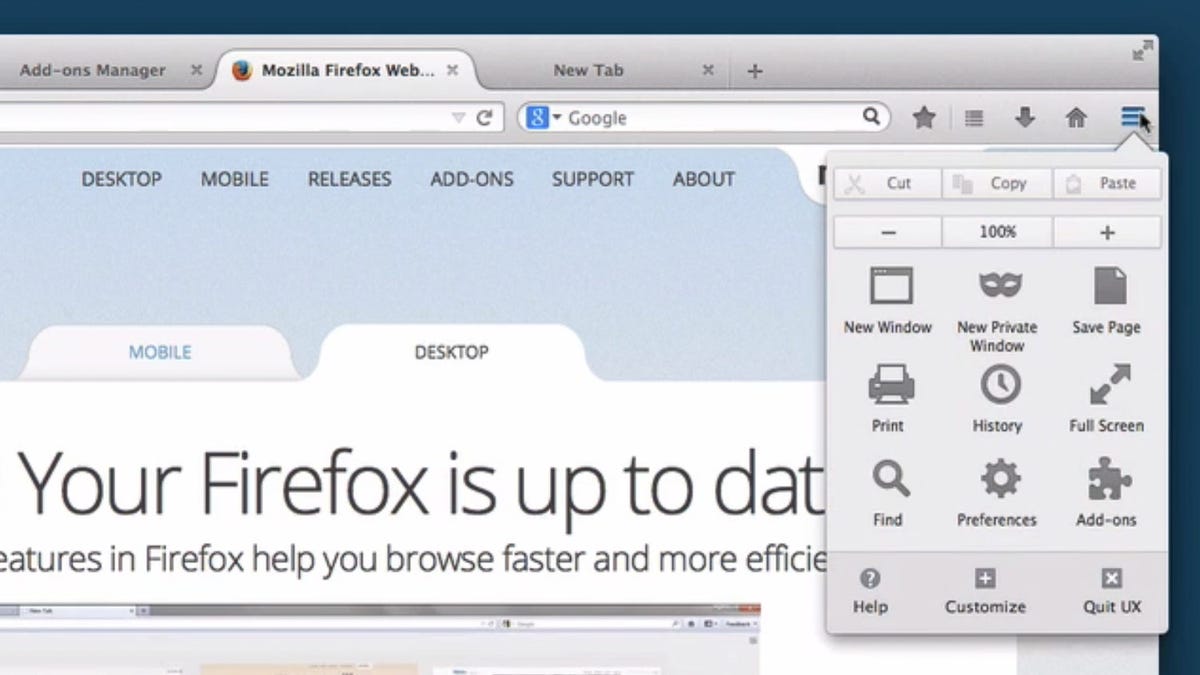Firefox's new interface is almost here
Mozilla gears up for the biggest overhaul to Firefox in more than three years as it prepares Australis for all.

Twelve weeks from now, the majority of Mozilla Firefox users will get a massive overhaul to the browser's interface and features. The project, code-named Australis, has been limited to Firefox's nightly builds, but adventurous fans can check out what's in the works with Friday's release of Firefox 29 Aurora.
In development for almost two years, the interface will be the most apparent change. On Windows and Linux, the orange Firefox button in the upper-left corner of the browser is gone, a hallmark since 2011's Firefox 4.
In its place, Mozilla has created a more graphics-friendly interface that looks similar across all platforms. The main menu on Windows, Mac, and Linux is hidden behind an Android-style "three horizontal lines" icon, with Settings options given big, touch-friendly, and easily identifiable icons. The curve angles on desktop Firefox tabs look similar, if not identical, to the curve on Firefox for Android, further reinforcing the unified look.
Firefox's product management director, Chad Weiner, said that "early testers" have shown the new interface "a lot of love."
"[T]he design changes we've made proved a big hit with our Nightly users," he said, referring to the rough, test version of Firefox available to the public that gets compiled once a day. "The biggest compliments we got were for the simpler, flexible UI that makes it faster and easier to do get things done and the ways we've made it easier to customize Firefox."
As my colleague Stephen Shankland noted when Australis debuted in November's Firefox Nightly, Mozilla is working on extensive documentation to help developers acclimate to the new look. Don't let that fool you, though: The changes are more than just cosmetic.
The new Firefox Aurora simplifies the Firefox Sync log-in procedure by creating a new unified Mozilla account while offering the same end-to-end encryption.
Mozilla's chief technology officer, Brendan Eich, said that existing Firefox Sync users can disconnect one of their devices to force the creation of a new account, but that it wasn't necessary.
"If people want to wait until the Beta, they could do that," he told CNET earlier this week, referencing the Firefox Beta that will ship with the new sync log-in six weeks from now.
A Mozilla spokesperson said that the company isn't expecting a backlash like the one that followed Firefox 4 and its new rapid-release cycle, which changed the browser to update versions every six weeks, like Google Chrome.
The redesign is expected to play a large role in Mozilla's ongoing struggle to parlay its desktop success, where it commands around 20 percent of the browser market, according to NetMarketShare. On mobile, NetMarketShare lumps Firefox for Android into "Other."
Update, February 10 at 11:05 a.m. PT: to include statement from Firefox's director of product management.

